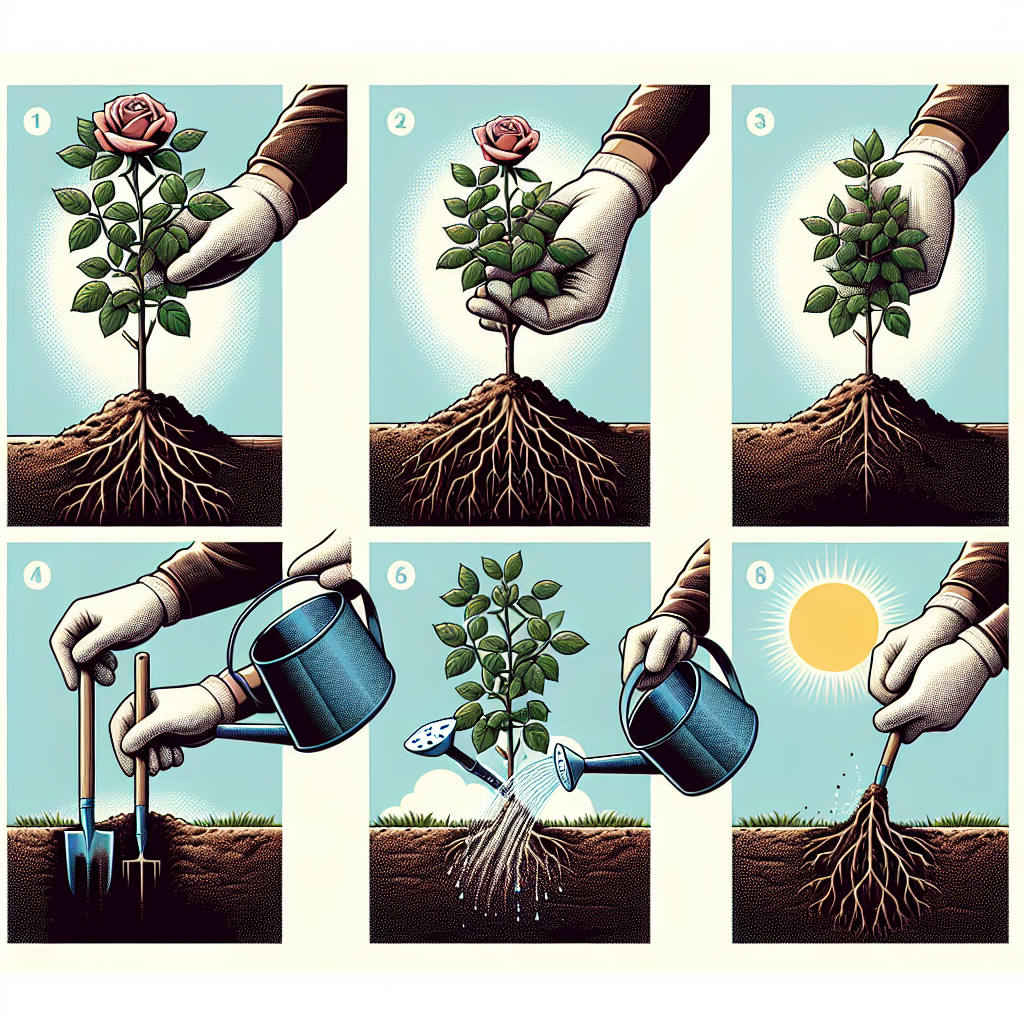
How to plant a rose plant
How to Plant a Rose Plant: A Step-by-Step Guide
Roses are often dubbed the queen of flowers, celebrated for their beauty and fragrance. Planting a rose plant can not only enhance your garden’s aesthetic but also provide you with joy and satisfaction as you watch your flowers bloom. In this guide, we delve into everything you need to know about planting and caring for your rose plants.
Choosing the Right Type of Rose
Before you dive into the planting process, it’s essential to choose the right type of rose for your garden. There are several varieties to consider, and each has its unique growing requirements:
- Hybrid Tea Roses: Known for their large blooms and fragrant scents, these roses are ideal for cut flowers.
- Floribunda Roses: These produce clusters of smaller flowers and bloom continuously throughout the growing season.
- Climbing Roses: Perfect for trellises and arbors, these roses can grow vertically, adding dimension to your garden.
- Groundcover Roses: These are low-growing varieties that bloom continuously, making them great for covering large areas.
Essential Tools and Materials
Before you start planting, gather the necessary tools and materials:
- Shovel
- Garden fork
- Pruning shears
- Compost or well-rotted manure
- Mulch
- Watering can or hose
When to Plant Roses
The best time to plant a rose plant is during early spring when the soil is warm and ready for new growth. In warmer climates, fall is also a suitable season, giving your roses enough time to establish roots before winter.
Preparing the Site
Proper site preparation is crucial for the healthy growth of your rose plants. Here’s how to set up the perfect environment:
Choosing the Right Location
Roses thrive best in areas with:
- Full Sunlight: Ensure the location receives at least 6-8 hours of direct sunlight each day.
- Good Drainage: Avoid areas where water tends to pool. Roses don’t like wet feet.
- Air Circulation: Space between bushes can help prevent diseases.
Preparing the Soil
Roses prefer a slightly acidic to neutral soil pH between 6.0 and 6.8. Here’s how to prepare the soil:
- Test the Soil pH: Use a soil testing kit and amend if necessary.
- Till the Soil: Use a garden fork to loosen the soil to a depth of about 12-15 inches.
- Add Organic Matter: Incorporate compost or well-rotted manure to enrich the soil.
How to Plant a Rose Plant
Once your site is prepared and the soil is amended, it’s time to plant your roses. Follow these steps for optimal results:
Planting Your Rose
- Digi in Hole: Dig a hole that is about 18-24 inches wide and 12-18 inches deep, depending on whether you are planting bare-root or potted roses.
- Position the Rose: For bare-root roses, soak the roots in water for a few hours before planting. Place the rose plant in the center of the hole, ensuring the graft union (the bulge where the rose variety was grafted onto the rootstock) is at soil level.
- Fill the Hole: Backfill the hole with soil, gently tamping it down to remove air pockets. Water generously to settle the soil around the roots.
Watering and Mulching
Once planted, it’s vital to ensure your rose receives adequate moisture:
- Watering: Roses need about 1 inch of water per week, especially during dry spells. Water deeply but less frequently.
- Mulching: Apply a 2-3 inch layer of mulch around the base to retain moisture and suppress weeds.
Caring for Your Roses
Your work doesn't end with planting; proper care is crucial for healthy growth. Here’s a comprehensive guide to nurturing your roses:
Fertilizing Roses
Feed your roses with a balanced fertilizer designed for flowering plants. In general, follow these guidelines:
- Spring Feeding: Apply fertilizer after the last frost to promote new growth.
- Mid-Season Feeding: A second application can help sustain growth during peak blooming months.
Pruning Roses
Proper pruning improves air circulation and encourages blooming:
- Timing: The best time to prune is in late winter or early spring before new growth begins.
- Techniques: Remove dead or diseased wood and cut back stems to encourage new growth.
Controlling Pests and Diseases
Monitor your plants for signs of pests and diseases:
- Common Pests: Aphids, spider mites, and thrips can damage your roses.
- Diseases: Watch for black spot, powdery mildew, and rust, which can affect foliage.
Conclusion
Planting and caring for roses requires effort, but the rewards are well worth it. By following the steps outlined here for **how to plant a rose plant**, you can create a beautiful and thriving rose garden that will bring joy for years to come. Remember to enjoy the process, learn from your experiences, and take pride in your blooming creations!
By Guest, Published on August 16th, 2024